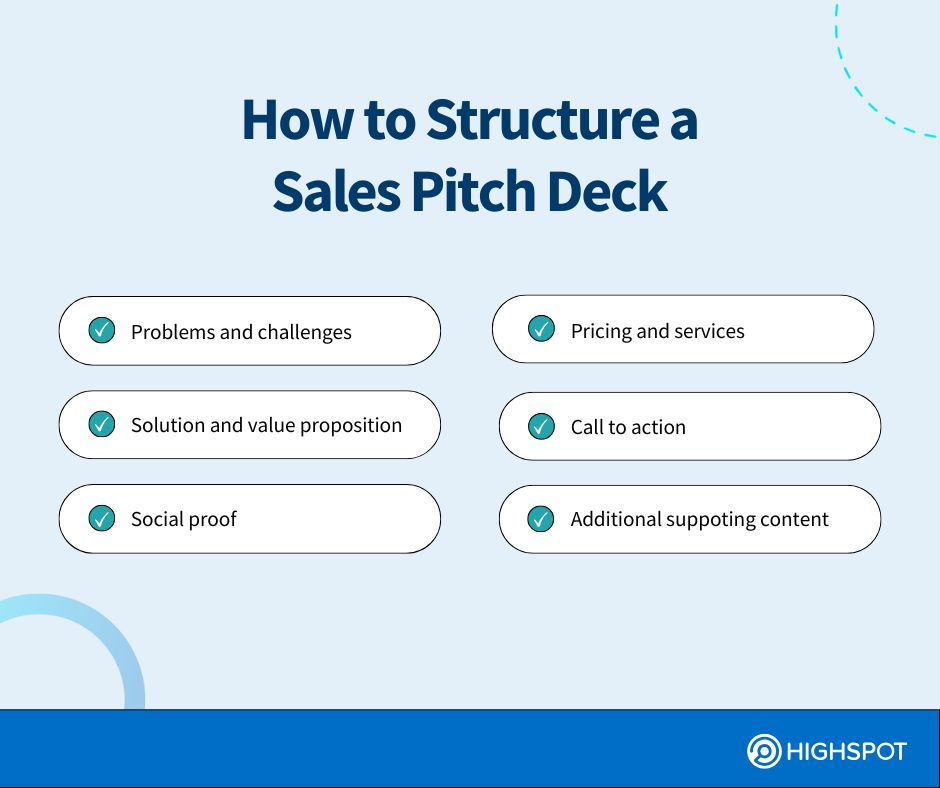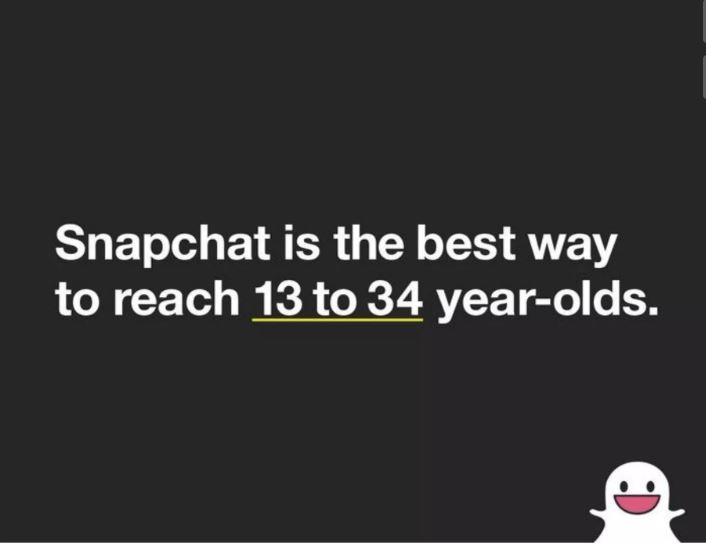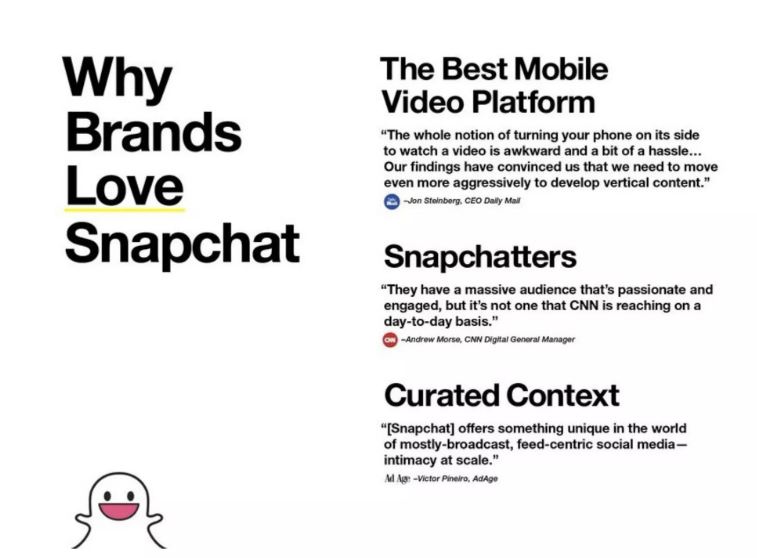Key takeaways
- Personalization is a must, not a nice-to-have, since 71% of buyers expect personalized experiences, and 76% get frustrated when they don’t get them.
- The best pitch decks follow a story arc that connects the problem to your solution with clear proof and a strong CTA.
- Regular updates tied to product changes, buyer feedback, and market shifts keep your deck sharp, relevant, and aligned with what your audience needs to hear.
You’re in a big sales meeting, feeling confident. You’ve practiced your pitch, you know the customer’s pain points, and the value you can offer. You open your deck and are shocked to find that it’s outdated. Old stats, irrelevant case studies, last year’s pricing. You try to recover, but your momentum’s gone. The prospect tunes out. The deal slips away.
Unfortunately, this happens more than we like to admit. Many sales teams build a sales pitch deck once and never touch it again. But a static deck in a fast-moving market is a recipe for missed opportunities. The good news? Fixing this isn’t hard.
In this guide, we’ll show you how to create a sales pitch deck that connects with your audience and keep it fresh with the latest trends, proof points, and value messaging using a maintenance trigger checklist.
What is a sales pitch deck?
A sales pitch deck is a presentation that supports your sales conversation. It helps you tell a story, highlights value, and guides the prospect to buy your product.
Sharing a story that resonates with the prospect is the best way to connect emotionally and shows that you’ve done your homework and can offer a solution worth their time. This is important because 71% of buyers expect companies to deliver personalized interactions, and 76% get frustrated when this doesn’t happen. By tailoring your own sales deck to the uniqueness of your prospects, you immediately differentiate your message, establish credibility, and lay the foundation for a meaningful, productive business relationship.
And don’t overlook the power of visuals. Research from MIT found that the human brain can process images in just 13 milliseconds, which makes sales pitch decks incredibly effective. They’ll always leave a stronger impression than a text-heavy presentation.
What is the difference between a sales pitch and a sales pitch deck?
At a glance, a sales pitch and a sales pitch deck may seem interchangeable, but they play different roles in your sales strategy.
The pitch is the act. The deck is the support. The sales pitch may be a live, spoken conversation where the sales rep actively engages with the prospect, or they send a sales pitch email, while the sales pitch deck is a visual aid that reinforces that message.
A sales pitch example might be a quick, persuasive storytelling opportunity during a cold call. But on a discovery call or product demo, a designed deck can help guide the conversation, explain complex ideas, and make a strong case for your solution. This is especially important when presenting to a room full of stakeholders or chasing a high-stakes deal. Sales reps can ask questions and tailor the discourse around the prospect’s needs.
How to structure a sales pitch deck
A well-structured sales pitch deck looks professional and is persuasive enough to guide the audience through a compelling story. Slide-by-slide, it builds a case that leads prospects from recognizing their problem to seeing success with your solution and aligns with your broader sales process.
Here’s a sales presentation structure that works:

Problems and challenges
Start by listening to your potential clients’ pain points and show that you understand their challenges before diving into solutions. This is the first step in building trust and sets the stage for a consultative approach.
Then, use data or stories to highlight the challenges in their industry. For example, if you’re selling HR software, spotlight how manual onboarding slows productivity and frustrates new hires.
Solution and value proposition
Present your product or service as the answer. Focus on value, not just the product’s features. Aim for three core value points: time savings, reduced costs, or better visibility. Show how your solution fits into their world and that your product or service solves real problems.
Top performers excel at this by defining a strong value proposition, targeting the right buyers at the proper levels, and delivering first meetings that are more customized and value-focused than the rest. The result? They achieve 2.7 times more conversions and 1.8 times more quality outcomes (like meetings, conversations, and demos). This proves that a tailored, benefit-driven approach is a game-changer for driving results.
Social proof
Buyers need evidence, including case studies, customer testimonials, stats, and real visuals and demos. Studies show that 89% of buyers trust recommendations above all other advertising channels.
For example, share financial projections showing increased revenue or ROI for a client in the same industry. Include a testimonial that supports the stat, such as a 30% reduction in time-to-close. You can also highlight a case study with before-and-after results and finish with a product demo geared toward their use case.
Pricing and services
Outline packages or pricing tiers. A pricing table or comparison chart can make it easier for prospects to compare your offerings at a glance.
If pricing varies, effectively communicate your pricing philosophy (value vs. cost). Make it clear that you’re willing to work with the prospect to find the best fit for their budget and goals.
Call to action
Make it strong and specific. Instead of “Let us know,” try: “Schedule your demo today and see the difference for yourself.” A clear CTA helps accelerate the buying decision by prompting action.
Additional supporting content
Be prepared for questions about tech, security, integrations, and support. Keep a few slides in your back pocket covering onboarding timelines, compliance certifications, competitive analysis, or how your solution plays nicely with your prospect’s tools.
Also, be ready to link prospects to relevant resources in your digital sales rooms to provide deeper context or specific supporting content.
Sales pitch deck do’s and don’ts
Creating a winning sales pitch deck means the sales rep has to present with clarity, confidence, and purpose. Whether designing your first deck and sales narrative or refreshing an old slide deck, these tips will help you stay on track.
Do’s
- Personalize your deck to your target audience’s needs.
- Build a narrative that keeps your prospect engaged from start to finish.
- Modify your content for live and online sales presentations
- Get feedback from others before presenting to catch any issues early.
Dont’s
- Don’t overload your slides with content or too many bullet points (stick to no more than 3-5 per slide to keep it scannable).
- Avoid listing features without context or trying to include every detail in one simple pitch.
- Refrain from using tiny fonts or colors that are hard to read on the screen.
How to keep your sales pitch deck up-to-date
Your sales pitch deck should be dynamic. As markets evolve, competitors shift, and customer priorities change, your deck needs ongoing updates to stay relevant. Outdated information risks credibility because prospects can tell when your data or messaging doesn’t match reality. Keeping your deck updated ensures your pitch feels informed and tailored to your prospects’ current challenges.
To make updating easier:
- Use modular slides: Build your deck in modular sections to swap out outdated slides without redesigning the whole deck.
- Cloud-based tools: Store your pitch deck in the cloud so everyone can access the latest version wherever they are. Consider sales content management systems like Highspot, Google Drive using Google Slides, or SharePoint.
- Standardize sales presentation templates: Consistent formatting means fast edits without reformatting every time.
- Automate updates: Integrate live data feeds (like CRM or analytics tools) so statistics and visuals update automatically in real time without manual effort. Be sure to set reminder notifications for updates.
Sales pitch deck maintenance checklist
Below is a practical checklist to guide you in keeping your deck ready to grab for any sales call, along with specific triggers and strategies to make updates easier. Designate a team member to oversee updates and be accountable. Use calendar alerts for regular reviews and label each iteration for version control.
| Task | Frequency/Trigger | Details |
|---|---|---|
| Review key proof points | Quarterly | Update stats, 3rd party proof, and case studies to reflect recent successes. |
| Sync product changes | After every update | Adjust feature lists, screenshots, or pricing to match the latest offering. |
| Incorporate customer feedback | After recurring questions or objections | Add slides or tweak messaging to tackle common questions. |
| Test visuals and data | Before major presentations | Verify that all images, charts, and live data feeds are accurate and functional. |
Related resource: The All-In-One Sales Content Management Toolkit
Sales presentation tips
Your delivery can make or break a deal, turning a good deck into a conversation starter. Here are some proven presentation tips to help you present with confidence, keep them engaged, and leave a lasting impression:
- Follow the 10/20/30 rule of PowerPoint: Guy Kawasaki recommends 10 slides, 20 minutes, and a 30-point font. This forces clarity and conciseness and makes your message stick.
- Make your deck interactive: Add polls, quizzes, or word clouds to boost sales engagement. These elements keep potential clients interested and encourage real-time feedback.
- Encourage dialogue: Actively listen, pause to ask questions, invite audience participation, and reply genuinely. This turns your presentation into a dialogue.
- Close strong: Finish with a noteworthy conclusion summarizing key benefits, reinforcing your main message, and outlining the next steps. A strong ending leaves prospects feeling inspired and ready to act.
Sales deck examples
Study successful sales deck examples from companies like Snapchat and Zuora to see what works. These decks show how structure, visuals, and evidence can communicate value to an audience.
Let’s explore two examples, explain why they work, and how you can improve your presentations.
Snapchat


Snapchat’s sales pitch deck was designed to pitch its advertising platform to potential business partners. The first slide sets the friendly sales narrative, highlighting their precise audience with a large font and bold statement. From there, it highlights how brands like the Daily Mail use Snapchat to connect with users, backed by stats and practical use cases.
Why it works:
- Visual focus: Snapchat uses images more than text. The visual presentation mirrors Snapchat’s platform, making it easy and enjoyable for viewers.
- Concrete examples: Featuring well-known brands and their testimonials adds credibility and helps the prospect understand how they can benefit.
- Logical flow: The presentation goes from introducing the problem that potential customers have in reaching a particular audience to explaining why Snapchat is the answer, with supporting stats and business applications. It ends with FAQs, keeping the narrative structure focused on the market opportunity.
Zuora

Zuora, a subscription management software company, created its sales deck to communicate its role in the “subscription economy.” The deck starts by framing a significant market trend—businesses shifting from products to relationships through recurring revenue models—establishing context and urgency. It then identifies a common challenge (outdated business processes can’t adapt) before presenting Zuora’s solution. The presentation ends with proof of success, including testimonials from Schneider Electric and the Financial Times.
Why it works:
- Strong narrative: Zuora tells a story about a significant market shift that will leave those who don’t adapt behind. They then position their solution as the answer.
- Structured flow: The progression from challenge to solution to proof is easy to follow.
- Evidence-based: Customer testimonials from well-known companies help build trust.
Snapchat and Zuora’s pitch decks feel human. They work because they connect with their audience through simplicity, graphics, and storytelling. To apply this to your sales deck template, focus on flow, your audience’s needs, good visuals, and evidence to get your points across.
Transform your sales pitch deck with Highspot
The best sales deck tells a great story, communicates value, and persuades the prospect that your solution is exactly what they need. But keeping it fresh and relevant is a lot of work. Updating your pitch deck regularly helps you stay aligned with your customers’ changing needs, outpace your competitors, and give your sales team a clear and credible story to tell.
Highspot’s AutoDocs content automation software makes it easy for your sales team to create personalized content. In minutes, sales reps can build custom pitch decks, proposals, and presentations from pre-approved templates. Built-in controls also enforce brand guidelines and streamline content reviews, ensuring your reps deliver consistent, accurate, and high-quality decks every time. Highspot integrates with platforms like Salesforce and Microsoft Dynamics, bringing data-driven visuals into your presentations.




